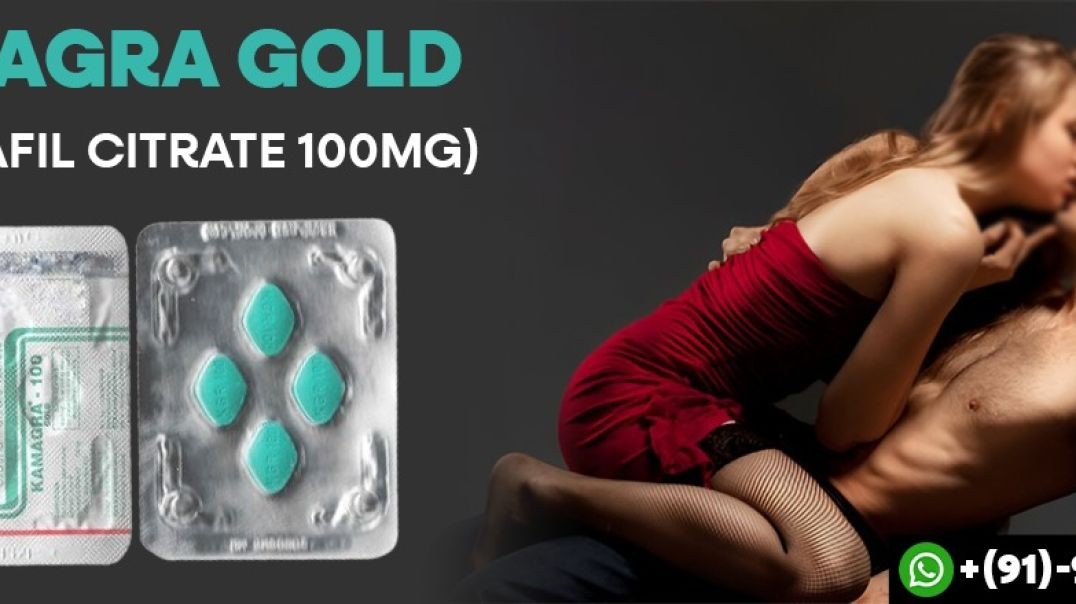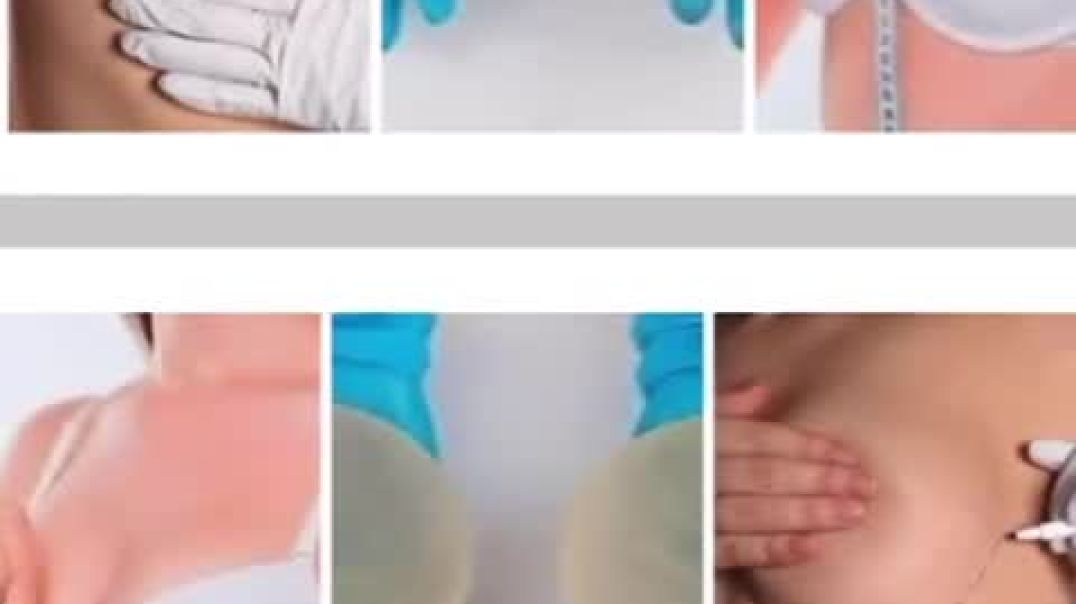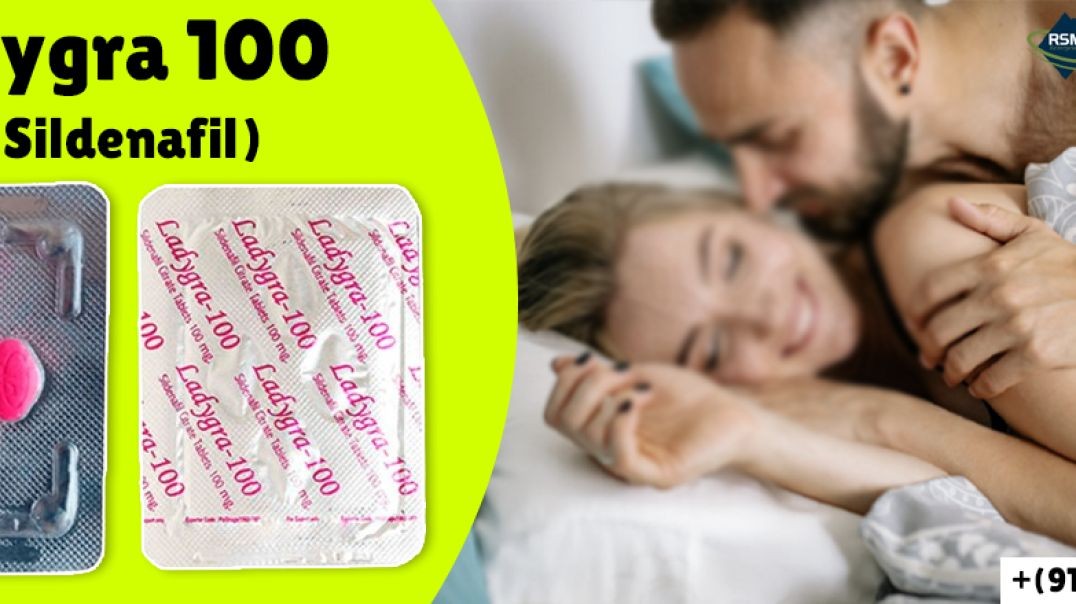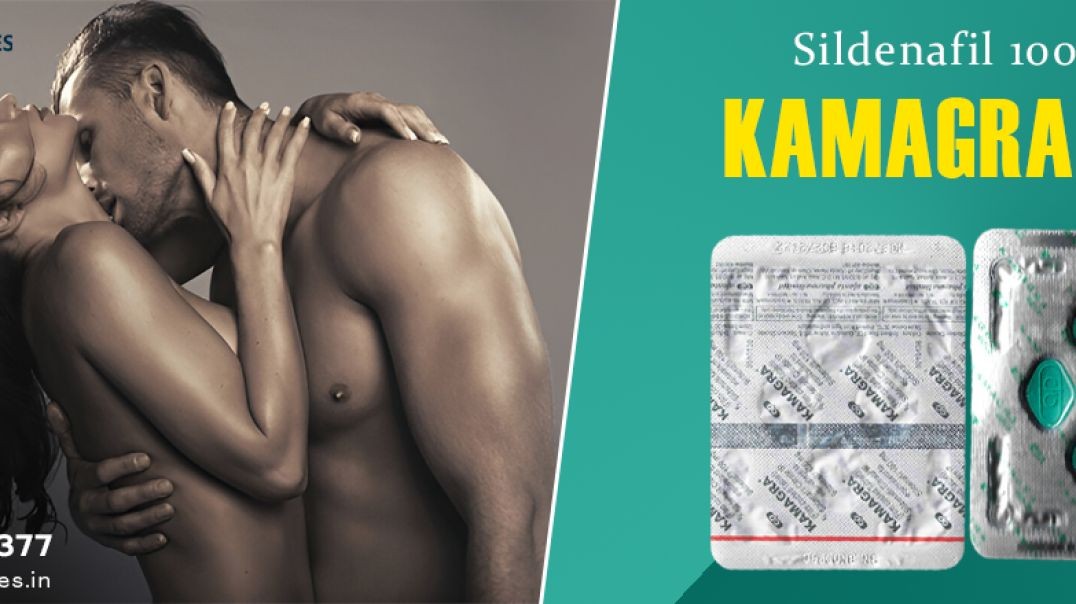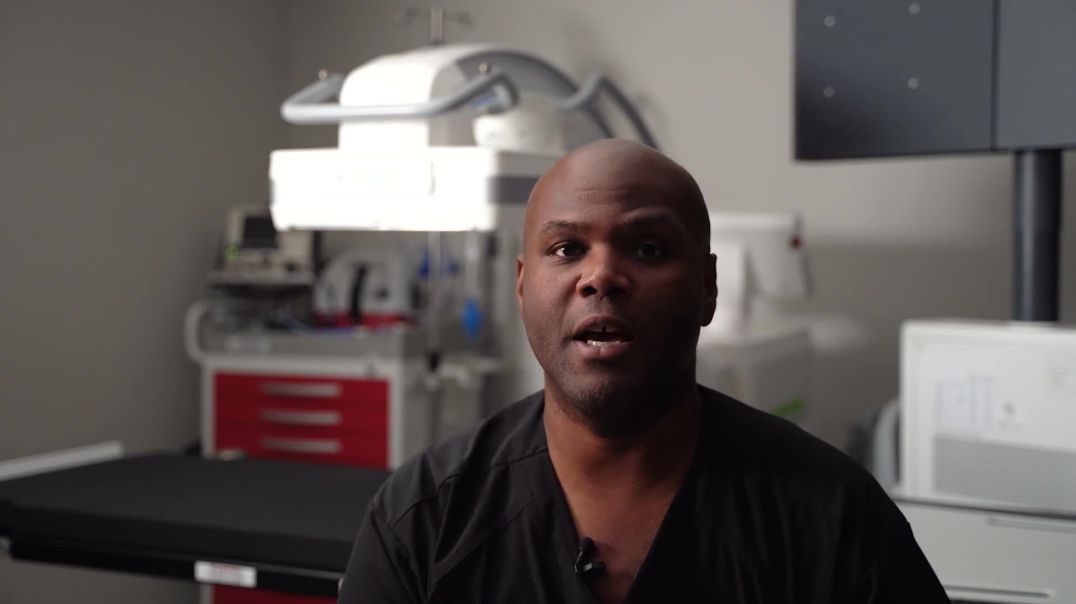Top videos
Kamagra Gold is used to get and sustain an erection in Erectile Dysfunction in men. Kamagra Gold is similar to Viagra but is often marketed at a lower price. It is typically taken orally, about 30 to 60 minutes before sexual activity.
Chat on WhatsApp with +91 92163-25377
Buy Now : https://www.rsmenterprises.in/....product/viewdetail/k
#rsmenterprises #health #healthcare #kamagragold #sildenafil100mg #genericviagra #maleedmedicine
Sildenafil sublingual spray is a fast-acting medication for erectile dysfunction, delivered as a spray under the tongue for quicker absorption and onset compared to traditional tablets.
Chat on WhatsApp with +91 92163-25377
Buy Now : https://www.rsmenterprises.in/....product/viewdetail/m
#rsmenterprises #health #healthcare #maxgunsublingualspray #sildenafilsublingualspray #edmedicine #genericviagraspray
Sildenafil 100mg + Tadalafil 40mg (Sildalist Strong) is a combination of two phosphodiesterase type 5 (PDE5) inhibitors used to treat erectile dysfunction (ED) in men.
Chat on WhatsApp with +91 92163-25377
Buy Now : https://www.rsmenterprises.in/....product/viewdetail/m
#rsmenterprises #health #healthcare #maxgunsublingualspray #sildenafilsublingualspray #edmedicine #genericviagraspray
Aurogra 100mg is a medication primarily used to treat erectile dysfunction (ED) in men. It contains sildenafil citrate, the same active ingredient as Viagra, and works by increasing blood flow to the penis, helping men achieve and maintain an erection when sexually stimulated.
Chat on WhatsApp with +91 92163-25377
Buy Now : https://www.rsmenterprises.in/....product/viewdetail/a
#rsmenterprises #health #healthcare #aurogra100mg #sildenafil100mg #menshealth #genericviagra #maleviagra
Sildigra 250mg is a medication primarily used to treat erectile dysfunction (ED) in men. It contains sildenafil, which works by increasing blood flow to the penis, helping to achieve and maintain an erection when sexually aroused.
Buy Now : https://www.rsmenterprises.in/....product/viewdetail/s
#rsmenterprises #health #healthcare #sildigra250mg #edmedicine #sildenafil250mg #genericviagra #maleviagra
Super Tadapox is a dual-action tablet designed to treat erectile dysfunction and premature ejaculation. It combines Tadalafil and Dapoxetine, helping improve sexual performance by enhancing erectile function and delaying ejaculation.
Buy Now : https://www.rsmenterprises.in/....product/viewdetail/d
#rsmenterprises #health #healthcare #supertadapox #tadalafil40mg #dapoxetine60mg #menshealth #genericcialis
Breast Augmentation Surgery in Delhi: Empowering Confidence
Breast augmentation surgery is a procedure that involves the use of implants to enhance the size and shape of the breasts. It is one of the most popular cosmetic surgeries performed globally, and Delhi offers some of the best options in India for individuals seeking to achieve a fuller and more symmetrical breast appearance.
Why Choose Breast Augmentation Surgery?
Enhanced Aesthetic Appeal
Many women choose breast augmentation surgery to create a more balanced and proportionate figure. For those with naturally small breasts or those who have lost breast volume due to factors like pregnancy, weight fluctuations, or aging, breast implants can help restore the volume and shape of their breasts.
In this inspiring video, Anamika shares her incredible journey of overcoming a life-changing experience. She talks about discovering a lump in her breast, the challenges of undergoing a mastectomy, and how breast reconstruction surgery gave her a new lease on life.
Anamika discovered a tennis ball-sized lump in her breast six months ago, which led to her doctor recommending a mastectomy. She shares the emotional struggles she faced, including fears about her appearance and how to explain the situation to her daughters.
She then talks about getting to know the option of breast reconstruction surgery. The procedure, which uses fat from the tummy to rebuild the breast, not only restored her confidence but also gave her the bonus of a flatter tummy! Anamika explains how natural the results feel and how it has helped her regain her life and confidence.
Anamika’s message is simple but powerful: if you or someone you know has had to remove a breast due to a lump or cancer, there are reconstruction options available. This surgery can help you feel like yourself again and live with confidence. Watch her story and share it with others to spread awareness about this life-changing procedure.
-------------------------------------------------------------------------------------------------------------------
About Dr. Rajat Gupta and RG Aesthetics
At RG Aesthetics, India’s best plastic surgeon, Dr. Rajat Gupta is at your service! With 13 years of experience, brand certification, and international recognition, Dr. Gupta is the solution to all your contouring needs.
His expertise in liposuction techniques combined with the state-of-the-art technology available at RG Aesthetics ensures we continue providing the most reliable services with incredible, instantaneous results!
Our equipment allows for every kind of liposuction there is – especially the minimally invasive kinds. Dr. Gupta reflects RG Aesthetics’ belief of the patient’s comfort always being paramount. Procedures at RG Aesthetics, under Dr. Rajat Gupta, minimize trauma and speed up recovery time for the best results!
.
.
Schedule a Consultation:
☎ Call: +91 - 9251-711-711
✉️ contact@drrajatgupta.com
⛓️💥 Visit: https://www.drrajatgupta.com
✅https://www.instagram.com/rajatguptadr
✅https://www.facebook.com/drrajatgupta/
✅https://www.linkedin.com/in/rajat-gupta-9a6b23119/
#breastreconstruction #mastectomyjourney #womenshealth #inspiringstory #bodyconfidence #cancerawareness #breastcancersurvivor #lifeaftersurgery #plasticsurgeryawareness #tummytobreast #feelconfidentagain #healthjourney #breastcancersupport #surgicaloptions #womensempowerment #excelhospital #rgaesthetics #drrajatgupta
Sildalist Strong 140mg is one of the well-known medicines used to treat male erectile dysfunction. It contains two active substances: sildenafil and tadalafil. Both of them act together to enhance the supply of blood to the male genital area, which can result in a strong and longer erection. You can buy Sildalist Strong 140 mg online. Following are some advantages: Among its most important advantages, it is extremely effective, particularly for those patients who have not experienced a satisfactory result with lesser dosages or with other medications taken for ED. Another significant reason, the unique combination of sildenafil and tadalafil used in Sildalist Strong 140 mg can prolong the effect duration and also provides the patient with the ability to more accurately fine-tune his response to such product treatment. Another significant benefit of this product is that it is convenient. It comes in the form of a tablet, and thus it can be consumed discreetly without opting for injections or any invasive methods. This feature is beneficial to the men who are sensitive towards other options available for treatment and are shy about their ED issue. Sildalist Strong 140 mg is, in general, of much importance to the men afflicted with ED.Buy Sildalist Strong 140mg online at our web store https://www.firstchoicemedss.c....om/sildalist-strong-
RSM Enterprises presents an unrivaled range of Tadalafil 80mg (Tadaga Power) which is now standard treatment for erectile dysfunction which leads to an erection.
Buy Now : https://www.rsmenterprises.in/....product/viewdetail/t
#rsmenterprises #health #healthcare #tadagapower #tadalafil80mg #menshealth #genericcialis #malecialis
Ladygra 100mg is a prescription medication used to treat female sexual dysfunction, specifically female sexual arousal disorder and female sexual interest/arousal disorder. Today Order Now !!
Buy Now : https://tinyurl.com/buy-ladygra-100mg
#rsmenterprises #health #healthcare #ladygra100mg #femalesildenafil100mg #femalegenericviagra #womensviagra
There is a product available on the market, Zyhcg 10000, which can be used to treat infertility in men and women and issues associated with children's puberty.The key active ingredient used in the formulation of this product is human chorionic gonadotrophin. You can buy Zyhcg 10000 injection online. This hormone, also referred to as HCG, is extracted from pregnant women's placental cells to assist in treating infertility in both men and women. It brings back a woman's ovary's function of laying eggs, which was lost due to infertility-related complications earlier. It increases the sperm count of males.This product cures many childhood diseases, such as delayed puberty, but has to be used with a prescription; otherwise, it cannot be used. The doctor's prescription, that is the way it is advised to you, decides the dose and treatment duration.Women who are not able to conceive sometimes suffer from psychological issues along with physical issues, because some infertilities are only physical in nature and others are caused due to excessive tension or stress.Buy Zyhcg 10000 injection online at our web store https://www.firstchoicemedss.c....om/zyhcg-10000-iu-in
If you’ve just had breast augmentation in Delhi or are planning it, this video is a must-watch. It explains what the recovery feels like, how long it takes to heal, and what you should expect during the process — in easy, everyday language.
We talk about how recovery works with the flash recovery method, where most patients don’t feel much pain. Instead, there’s a sense of tightness because of the implant stretching the skin. You’ll likely be able to move your arms and even take a bath the next day, thanks to waterproof dressings.
You’ll also understand how to care for your stitches, why a sports bra is necessary 24/7, and what activities to avoid — especially workouts or lifting weights for at least six weeks. We explain how swelling reduces over time and how the implants slowly settle into a more natural position, a process often called “drop and fluff.”
A board-certified plastic surgeon will always guide you on how to sleep, when to start light massage, and what signs to watch out for, like fever or redness. Scar care is also covered — from basic antibiotic ointments to silicone gels or laser options after healing.
This recovery journey is different for everyone, but knowing what to expect makes it easier. If you’re healing now or getting ready for surgery, this video will help you feel more confident and prepared.
If you found this helpful, like the video and subscribe to the channel. And if you have questions, feel free to drop them in the comments — we’re always here to help.
------------------------------------------------------------------------------------------------
About Dr. Rajat Gupta and RG Aesthetics
At RG Aesthetics, India’s best plastic surgeon in India, Dr. Rajat Gupta is at your service! With 15 years of experience, brand certification, and international recognition, Dr. Gupta is the solution to all your contouring needs.
His expertise in liposuction techniques combined with the state-of-the-art technology available at RG Aesthetics ensures we continue providing the most reliable services with incredible, instantaneous results!
Our equipment allows for every kind of liposuction there is – especially the minimally invasive kinds. Dr. Gupta reflects RG Aesthetics’ belief of the patient’s comfort always being paramount. Procedures at RG Aesthetics, under Dr. Rajat Gupta, minimize trauma and speed up recovery time for the best results!
.
.
Schedule a Consultation:
☎ Call: +91-9090696951 / 9560156136
✉️ contact@drrajatgupta.com
⛓️💥 Visit: https://www.drrajatgupta.com
✅https://www.instagram.com/rajatguptadr
✅https://www.facebook.com/drrajatgupta/
✅https://www.linkedin.com/in/rajat-gupta-9a6b23119/
#breastaugmentation #implantrecovery #postsurgerycare #cosmeticsurgeryrecovery #breastimplants
Buy Kamagra 100mg is a potent medicine effectual in treating the condition of Erectile Dysfunction in men. The medicine contains an active substance of Purchase Sildenafil 100mg.
Buy Now : https://tinyurl.com/purchase-kamagra-100mg
#rsmenterprises #health #healthcare #kamagra100mg #sildenafil100mg #edmedicine #genericviagra #maleviagra
Medicinal Mushroom Extract Market Size was valued at USD 11.597 billion in 2023. The Medicinal Mushroom Extract market industry is projected to grow from USD 12.33 Billion in 2024 to USD 19.05 billion by 2032, exhibiting a compound annual growth rate (CAGR) of 5.58%during the forecast period (2024 - 2032).
read more @ https://www.marketresearchfutu....re.com/reports/medic
Our expertise in this domain has enabled us to bring forth effectual Tadalafil Super Active which is used to treat pulmonary arterial hypertension and erectile dysfunctions.
Buy Now : https://tinyurl.com/buy-tadagra-super-active
#rsmenterprises #health #healthcare #tadagrasuperactive #tadalafil20mg #genericcialis #malecialis #edmedicine
Buy Sildalist Strong is a preeminent medication that works to promote solution the chronic health condition, majorly known as Erectile Dysfunction. The oral medication comes with a blend of two active substances such as Sildenafil 100mg and Tadalafil 40mg.
Buy Now : https://tinyurl.com/buy-sildalist-strong
#rsmenterprises #health #healthcare #sildaliststrong #sildenafil100mg #tadalafil40mg #edmedicine #maleedmedicine
Are the cosmetic surgery terms such as liposuction, liposculpture and hi-def liposuction confusing to you? What are these technologies?
This video opens up new horizons on liposuction procedures and their technological advancements in terms of lipo-sculpting and high-definition procedures that are helping many patients get their desired body shape.
Watch this video to know more.
#liposuction #liposculpture #highdefinitionliposuction #3dliposuction #4Dliposuction
-----------------------------------------------------------------------------------------------------
About Dr. Rajat Gupta and RG Aesthetics
At RG Aesthetics, India’s best plastic surgeon, Dr. Rajat Gupta is at your service! With 13 years of experience, brand certification, and international recognition, Dr. Gupta is the solution to all your contouring needs.
His expertise in liposuction techniques combined with the state-of-the-art technology available at RG Aesthetics ensures we continue providing the most reliable services with incredible, instantaneous results!
Our equipment allows for every kind of liposuction there is – especially the minimally invasive kinds. Dr. Gupta reflects RG Aesthetics’ belief of the patient’s comfort always being paramount. Procedures at RG Aesthetics, under Dr. Rajat Gupta, minimize trauma and speed up recovery time for the best results!
Precision Vascular Kentucky specializes in innovative treatments for peripheral arterial disease (PAD), uterine fibroids, and debilitating joint pain affecting hips, knees, and shoulders. Led by Dr. Jean-Baptiste in Louisville, we are dedicated to "Restoring Flow! Saving Limbs! Changing Lives!" through advanced interventional procedures. We excel in treating PAD-related leg and foot pain, particularly for diabetic patients over 50 with non-healing wounds who may face amputation recommendations. Our expertise includes limb salvage through procedures like angioplasty and angiograms. For women suffering from uterine fibroids causing heavy bleeding and pelvic pressure, we offer uterine fibroid embolization (UFE) as an alternative to hysterectomy. Our joint pain treatments, including genicular artery embolization (GAE), provide hope for patients told they're too young for knee or hip replacement. We treat pain and stiffness through minimally invasive procedures that can eliminate what patients describe as "suicide pain." Precision Vascular Kentucky serves Louisville, Kentucky and Southern Indiana, working with multiple insurance providers. Our patient-centered approach combines cutting-edge endovascular treatments with compassionate care, helping patients achieve pain-free movement and improved quality of life when traditional alternatives may not be effective. For more info, visit us at https://precisionvascularkentucky.com/blog/ and https://precisionvascularkentu....cky.com/peripheral-a
Phone: (502) 365-4151
Address: 512 Executive Park, Louisville, KY, 40207, USA
In this video, we discuss the common concerns and misunderstandings about insurance coverage for gynecomastia surgery. Many patients wish for their insurance to cover this procedure, but it's important to understand that this decision is not influenced by the doctor or hospital but solely depends on your insurance policy.
Most insurance companies in India do not cover gynecomastia surgery as it is considered a cosmetic procedure. However, you can communicate with your insurance provider and what documentation we can provide to assist your claim if your insurance policy covers it.
In the video, we also discuss the ethical considerations and why it's important to be honest in your documentation.
Thank you for watching!
Be a part of our Gynecomastia community.
✅ Get insights from our patient community
✅ Ask our board-certified plastic surgeons anything
✅ View the before-and-after patients' results
✅ Connect with other patients & ask them about their experience
✅ First of its a kind initiative in INDIA for patient education and interaction
Join our community: https://drrajatgupta.com/community/
Gynecomastia Helpline: +91 95689 99333
Related Video:
1. Can Gynecomastia be cured non surgically?: https://www.youtube.com/watch?v=kXy5ZyrU-Sk
2. 8 Gynecomastia Surgery Myths: https://www.youtube.com/watch?v=2vzJUdfphc8&t=5s
3. The Ultimate Guide to Gynecomastia Surgery: https://www.youtube.com/watch?v=zFFHjO_uIDw&t=25s
4. Risk involved in Gynecomastia Surgery: https://www.youtube.com/watch?v=vw2diQ-T8K8
------------------------------------------------------------------------------------------------------------------------
About Dr. Rajat Gupta and RG Aesthetics
At RG Aesthetics, India’s best plastic surgeon, Dr. Rajat Gupta is at your service! With 13 years of experience, brand certification, and international recognition, Dr. Gupta is the solution to all your contouring needs.
His expertise in liposuction techniques combined with the state-of-the-art technology available at RG Aesthetics ensures we continue providing the most reliable services with incredible, instantaneous results!
Our equipment allows for every kind of liposuction there is – especially the minimally invasive kinds. Dr. Gupta reflects RG Aesthetics’ belief of the patient’s comfort always being paramount. Procedures at RG Aesthetics, under Dr. Rajat Gupta, minimize trauma and speed up recovery time for the best results!
Schedule a Consultation:
✅ Call: +91 - 9251-711-711
✅ contact@drrajatgupta.com
✅ Visit: https://www.drrajatgupta.com
✅https://www.instagram.com/rajatguptadr
✅https://www.facebook.com/drrajatgupta/
✅https://www.linkedin.com/in/rajat-gupta-9a6b23119/
#gynecomastia #plasticsurgery #insurancecoverage #cosmeticsurgery #healthinsurance #gynecomastiasurgery #medicaladvice #drrajatgupta #delhisurgeon #ckbirlahospital #patienteducation #medicalethics #healthcareindia #rgaesthetics #boardcertifiedplasticsurgeon
